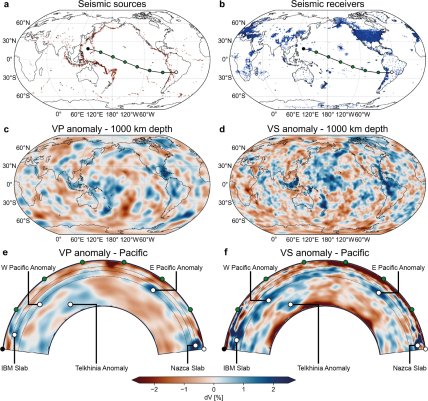A nearly forgotten world: Scientists explored the Earth's depths and discovered unexpected findings.
People have long been intrigued by the depths of our planet, and the question of what would happen if one were to descend very deep has even inspired the famous work of Jules Verne, "Journey to the Center of the Earth." While humans cannot physically descend to such depths, there are methods to glimpse into the very core. Recently, scientists have discovered something unexpected down there.
They did not find a Balrog, but there were plenty of oddities without it. The results of a new study were shared by the Swiss Federal Institute of Technology Zurich on January 7.
The essence of the study was an attempt to explore our planet using a new methodology known as full-waveform inversion (FWI).
FWI can be compared to an ultrasound technique, but instead of ultrasound, it uses seismic waves generated by earthquakes that radiate in all directions, penetrating the Earth. However, these waves can also change speed, refract, or reflect depending on the density of the rocks they traverse.
Seismographs around the world capture these waves, allowing scientists to interpret the results and gain insight into what lies deep beneath our feet. While traditional methods only interpreted part of the information, FWI was able to provide a more detailed view of what exists in the Earth's depths, although this required the use of the Piz Daint supercomputer.
The data obtained revealed that in certain areas of our planet, there are regions resembling fragments of tectonic plates. Such formations might occur during the process of subduction, where one plate moves beneath another due to a collision. However, they are not located where scientists expected to find them—beneath the oceans or far from the plate boundaries. For instance, they are found under the western part of the Pacific Ocean and beneath the East Pacific Rise, in areas where subduction should not be happening.

"This is our dilemma. With the new high-resolution model, we can see such anomalies throughout the Earth's mantle. We do not know exactly what they are or what material creates the patterns we have discovered," the scientists explain.
In their opinion, the primary hypotheses for the findings are either zones rich in silicates (such as basalt) that have survived since the mantle formed 4 billion years ago, or iron-rich rocks that have accumulated over billions of years due to mantle movements.
While there could be some arguments supporting the hypothesis that these anomalies are remnants of ancient lithospheric plates formed during the breakup of Pangaea or even before its existence, the scientists have not yet voiced them. Currently, they only understand that the underground world is much more complex than older models suggested, and existing systems need to be reevaluated.
As previously reported, the North Magnetic Pole of the Earth continues to move, and scientists say they have never seen anything like it. It was located near the northern coast of Canada, but in the 2000s, it began moving toward Siberia.